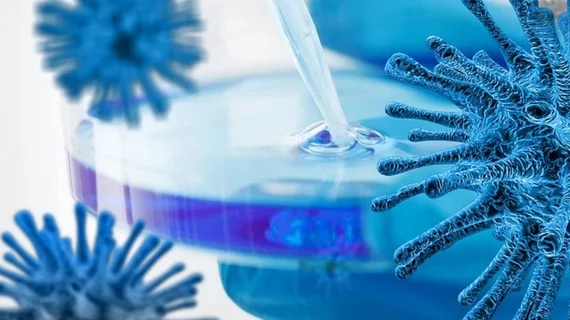Risk of death skyrockets when COVID-19 patients have both CVD and myocardial injury
Mortality rates for COVID-19 patients jump significantly when they have underlying cardiovascular disease (CVD) and myocardial injury, according to new research out of China.
The study, published in JAMA Cardiology, included data from 187 patients treated at a single hospital in Wuhan, China, from Jan. 23 to Feb. 23, 2020. All patients were either treated and discharged or died while being hospitalized. Trained physicians reviewed and confirmed patient information taken from electronic health records, and patients were excluded in instances when data was incomplete. If serum levels of troponin T (TnT) were higher than the 99th percentile upper reference limit, the authors explained, acute myocardial injury was considered present.
Overall, 23% of patients from the cohort died during hospitalization. The mortality rate while hospitalized for patients without underlying CVD and normal TnT levels was 7.62%. When the patient had underlying CVD and normal TnT levels, the mortality rate increased to 13.33%. Patients with no underlying CVD and elevated TnT levels, meanwhile, had a mortality rate of 37.5%, and patients with underlying CVD and elevated TnT levels had a mortality rate of 69.44%.
Malignant arrhythmias, glucocorticoid therapy and mechanical ventilation were all also higher for patients with elevated TnT levels, the team added.
“The current study demonstrates that patients with underlying CVD and other comorbid conditions are more prone to experience myocardial injury during the course of COVID-19,” wrote Tao Guo, MD, Zhongnan Hospital of Wuhan University, and colleagues. “For patients with underlying CVD, including hypertension, coronary heart disease, and cardiomyopathy, viral illness can further damage myocardial cells through several mechanisms including direct damage by the virus, systemic inflammatory responses, destabilized coronary plaque, and aggravated hypoxia. Therefore, patients with CVD are more likely to experience myocardial injury after COVID-19 infection and higher risk of death.”
When healthcare providers to discover signs of myocardial injury, Guo et al. concluded, “aggressive treatment may be considered.”

